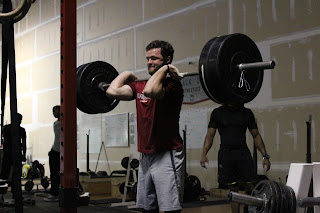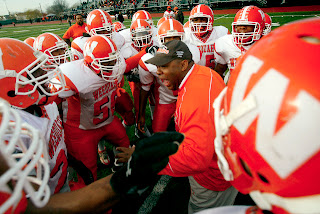Aaron Brooks Interview

1. Hi Aaron. I am glad you chose to do this interview with us. Could you tell us a little bit about yourself?
Thank you for having me. I have been in the health and fitness industry since 1991. I graduated from Eastern Kentucky University with a BS in Physical Education / Exercise Science. Before starting my business Fucntion First in 1995 I worked at a couple of health and fitness facilities specializing in one on one posture correction as well as fitness. Eventually I sold half of the business and moved across the country and created Perfect Postures in 2002. I have worked with numerous Olympic as well as professional athletes; and the majority of my clientele are chronic pain sufferers.
2. We deal with a lot of youth athletes. Could you tell us how you improve the posture, joint mechanics, and muscle imbalances?
First we do a postural evaluation. Second we do a gait analysis, and perform functional testing. These three components complete the puzzle. From there we create corrective exercise programs designed to correct muscle imbalances and joint inefficiencies/dysfunctions. Then the youth athletes have more homework, seeing as these exercises should be completed daily.
3. What do you say to parents that are concerned about strength training harming their kids?
There are plently of other things to be concerned about. (Sitting at a computer for hours, playing video games or watching tv for hours) Only if kids are repeatedly lifting too much heavy weight would I woryy about strength training. Body weight exercise can be very beneficial. I feel that kids do not get out and climb trees or jump over obstacles or crawl under posts. They are too sport specific and end up performing the same movmenets over and over. Kids should be kids. Get them out and play.
4. What are the most common structural issues you see with youth athletes?
The most common structural issues seen with young athletes are as follows. Both boys and girls often exhibit valgus knees as well as internal rotation at the hip joint. Often times they have no lateral stability in the hips as well as poor squat patterns. In addition there shoulder and thoracic issues such as poor mobility and joint dysfunction. Poor movement patterns are a real issue because the young athletes are playing sports and strength training and are then strengthening their disfunctions rather than correcting them.
5. Are their any mobility drills or stretches that every youth athlete should include in their program?
Yes and the sequencing is key. Here are a few of my favorites.
ONE ARM COUNTER STRETCH – Kneeling with ball: Kneel with the knees directly under the hips. Kneel a little more than arms length away from your ball. Reach forward placing one hand on the ball, and the other hand (or elbow) on the floor directly under your shoulder. Rotate the thumb out on the arm on the ball. Use your abdominals to tuck your pelvis back and take the curve out of your lower back and hold. You should feel a stretch under the arm and along the side. Let the head drop. To increase the stretch, roll the ball across your body slightly. Hold for the desired time. (: 30) Switch sides and repeat.
3D KNEELING GROIN STRETCH: Start in the kneeling groing stretch position. Lean forward until you feel the stretch in your groin. Draw your abdominals in to help stabilize your spine. From here there are 3 positions in which you move your upper body. The movements should be slow and controlled. 10x each position.
1. Lift both hands up and overhead with the elbows straight as the pelvis comes forward.
2. With arms out in front of you, rotate your upper body, arms and head away from the back leg.
3.Lift the same arm as the back leg straight over head and lean forward and reach over the top of your head at the same time.
UPPER SPINAL FLOOR TWIST: Lie on one side with both knees together. Bend the knees so that the knees are straight out from the hips (forming a right angle to the body). Place extended arms on the floor at a 90 degree angle from your body. The palms are on top of each other and level with the shoulders. Slowly lift the top arm up and over your body toward the floor behind you. Turn your head so you are facing the ceiling. Keep the knees together. If the top knee begins to slide backwards place the bottom hand on the top knee to help hold them in place. Find the point where the shoulder feels comfortable. Breathe deeply, relax and allow gravity to slowly bring the arm towards the floor. Come out of the stretch by lifting the arm up and back to the original starting position. Roll over to the other side and repeat. (1:30-2:00)
CATS and DOGS: Begin in the hands and knees position with the hands directly under the shoulders and knees directly under the hips. Your weight should be evenly distributed and feet relaxed. Smoothly round up the back and bring the chin toward the chest. Next, smoothly sway the back down as the head looks up. Make it one fluid movement rather than holding any one position. Exhale as the head looks up and inhale as the head looks down. Keep the elbows straight throughout the movement. (10x)
6. How often should a youth athlete practice these drills to see some improvement?
Everyday or as close to daily as possible. The more the better.
7. Do you feel that your Versus product could be used for youth athletes?
Yes absolutely. Versus challenges an individuals proprioceptive awareness which is critical in athletics. It also develops core stability and joint stabilization which is also very important for preventing injuries as well as proper joint function.
8. How important are assessments for youth athletes?
Very important. Without an assessment you don’t know where to go. Which means you are just throwing out exercises to the athletes and not understanding why you are giving them the exercises. When put this way, you can see how without an assessment training could cause more harm than good.
9. Can a youth athlete make significant improvements with bad posture and joint dysfunctions?
Absolutely. However the only way they are going to so is by completing their exercises daily. These corrective exercises are working on reprogramming the neuromusclular system. It starts with improving muscle symmetry, which is going to improve joint alignment, which in turn improves joint function.
10. Who in the Industry has influenced the way that you train?
All of the health professionals I have had the pleasure of working with. I try to learn something from everyone I meet or work with.
11. Thanks for doing this interview and where can we learn more about you. What projects are you currently working on?
www.perfectpostures.com
www.myoforce.net
I have opened a new facility in Newton, MA. MYOFORCE is bridging the gap between corrective exercise and strength training. I was also asked to lecture this year on the Perform Better Circuit. I will be speaking about correcting muscle and joint dysfunction. I have launched the Versus product as well as the Versus strength training programs and pain relief programs on www.myoforce.net.. In addition MYOFORCE has begun developing affiliate relationships with HealthClubs around the country as well as internationally.




Comments
Post a Comment